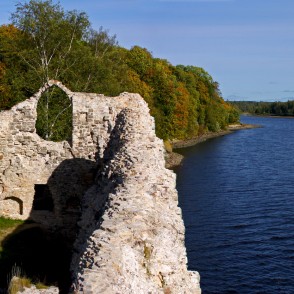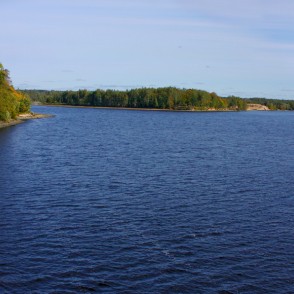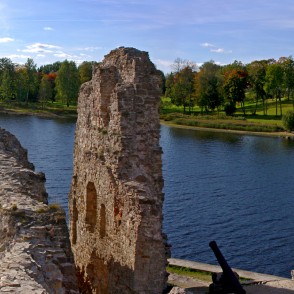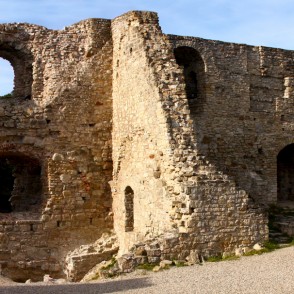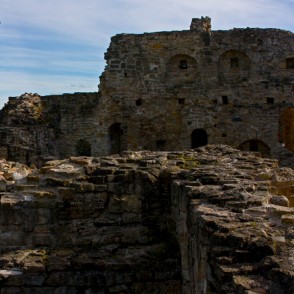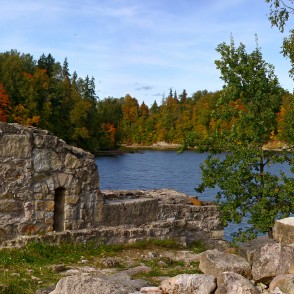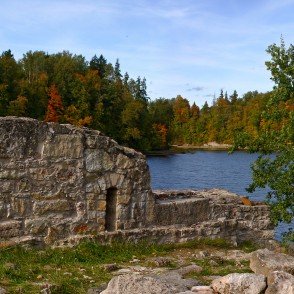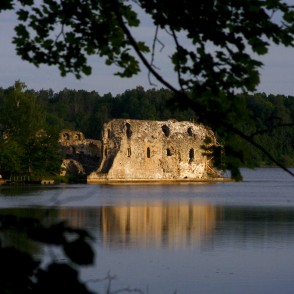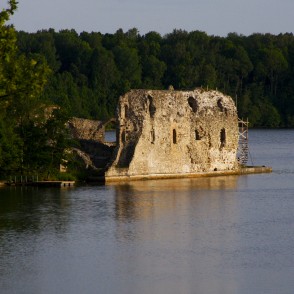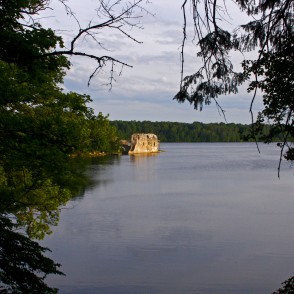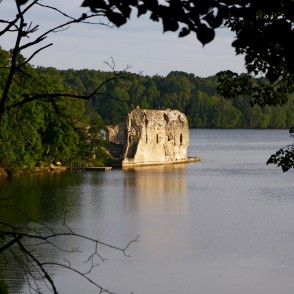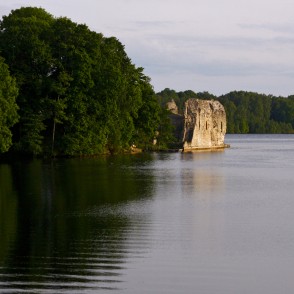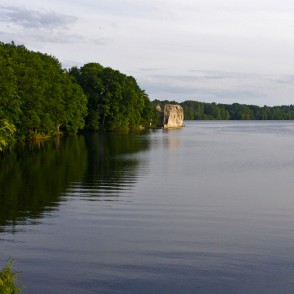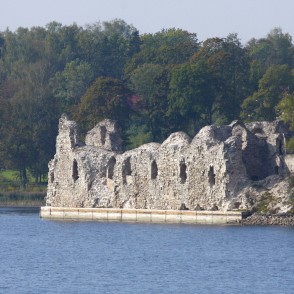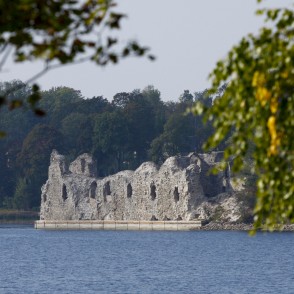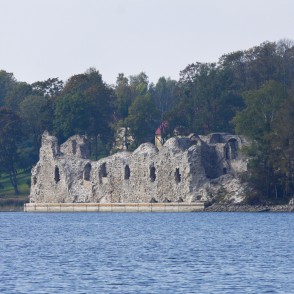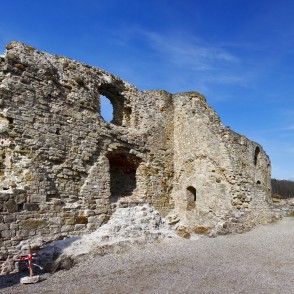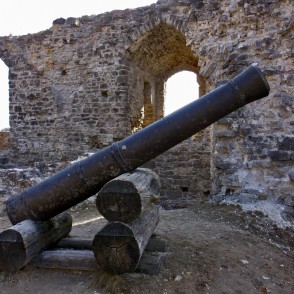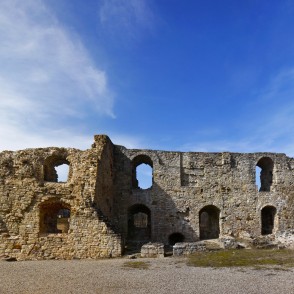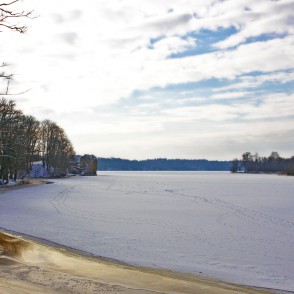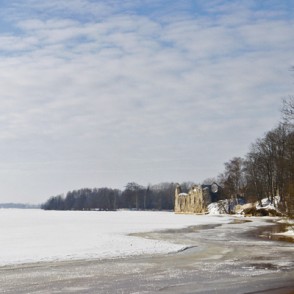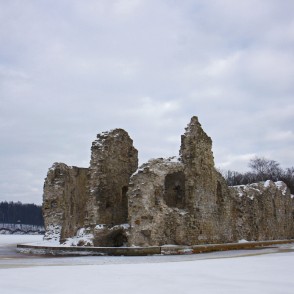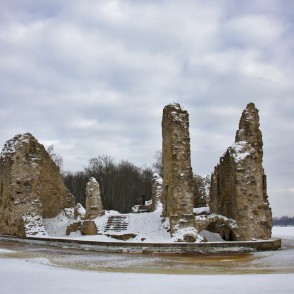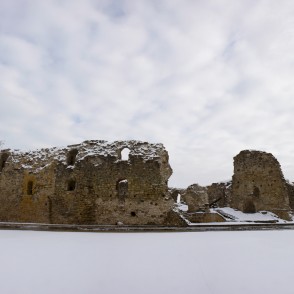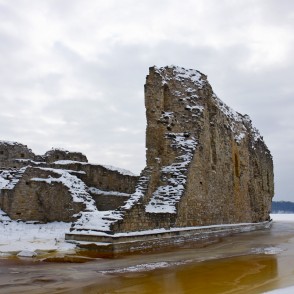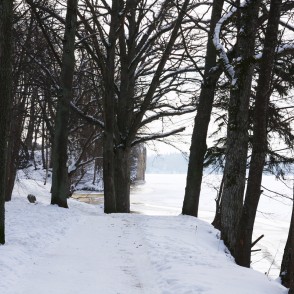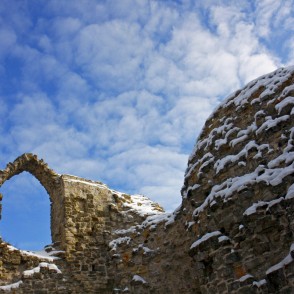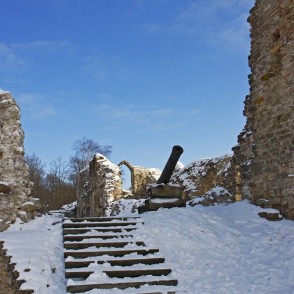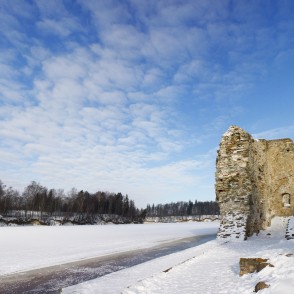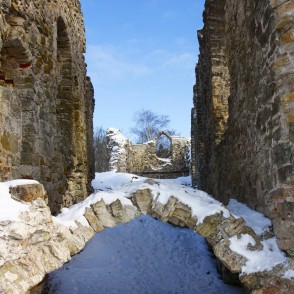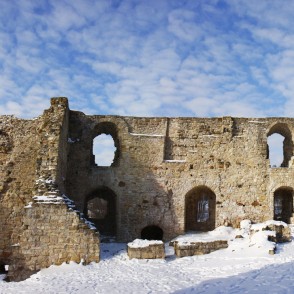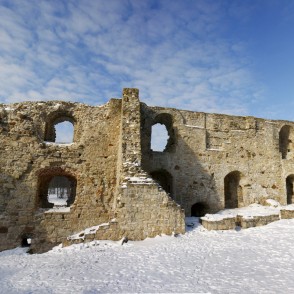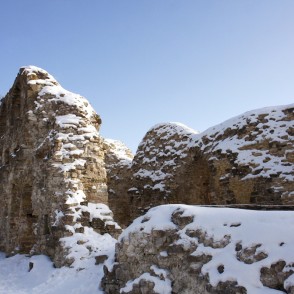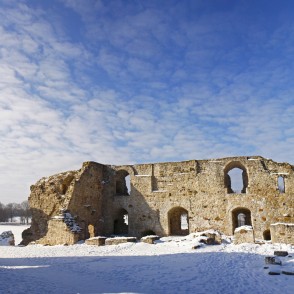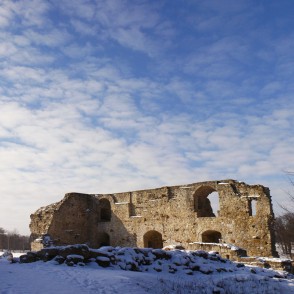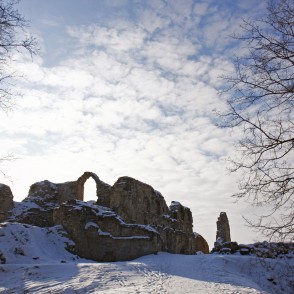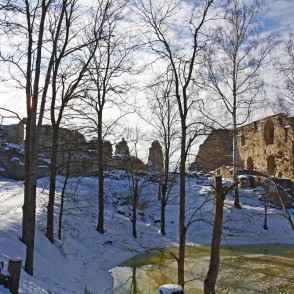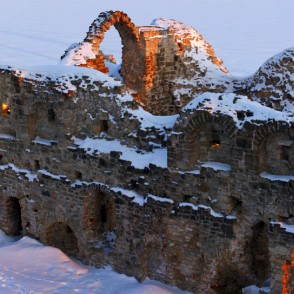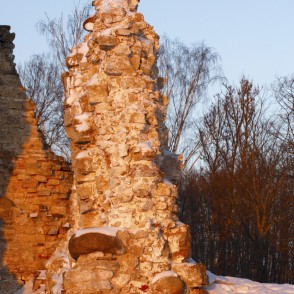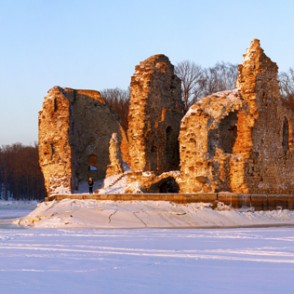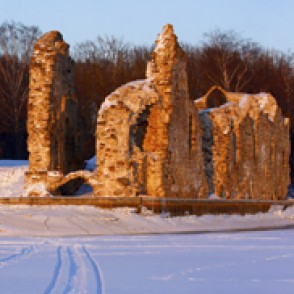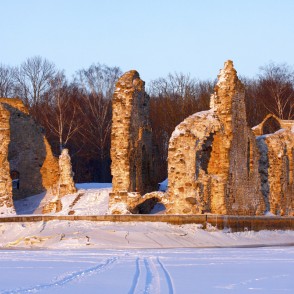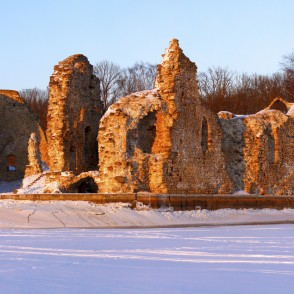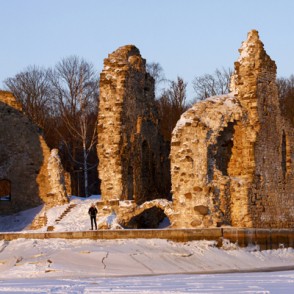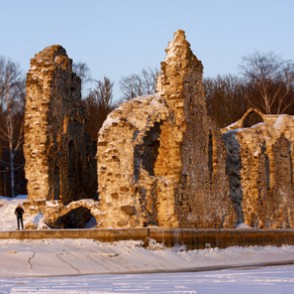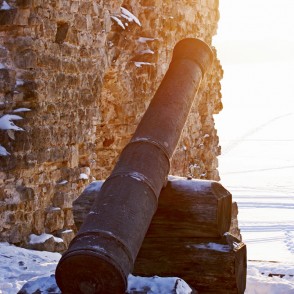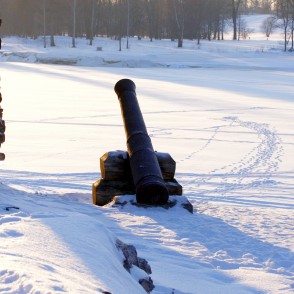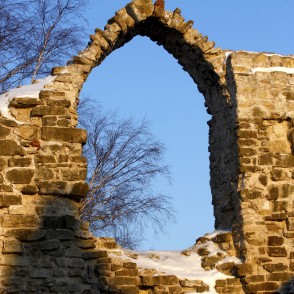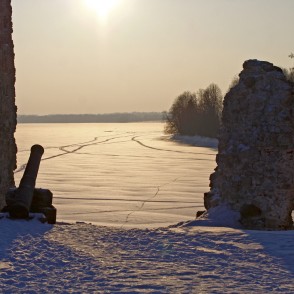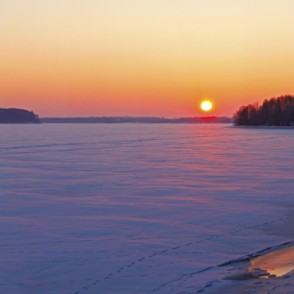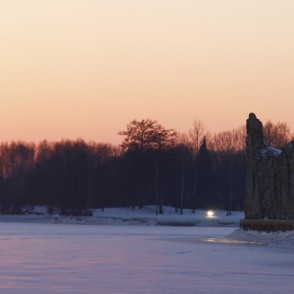Medieval castle Ruins at Koknese
One of the largest and most significant medieval castles on Latvian territory was the Koknese castle. The construction work for the castle of the archbishop of Rīga began here in 1209, and in a short period of time, a fortified castle and the majority of the Koknese town had been built. The Koknese castle was abandoned after the bombing of the western towers in 1701; the impressive ruins have remained untouched since then. After the flooding of the Pļaviņas hydroelectric power plant reservoir, water levels reached the foundation of the castle.
Koknese medieval castle ruins remain one of the most picturesque places between the two rivers – Pērse and Daugava.
The Koknese medieval castle ruins often host concerts and performances, as well as activities like minting coins, throwing axes, writing with quills, wedding ceremonies according to medieval or ancient Latvian traditions, and the traditional Catfish Waking Festival. The historical exposition in castle ruin pavilion gives insight about the previous scenery of the place.
Kokneses parks, Kokneses pagasts, Kokneses novads, LV-5113
+371 29431563
Visitor pavilion at Koknese castle ruins, open to the public from April 19-October 31, from 9: 00- 19: 00 every day!
Enterence price
Koknese Castle (Latvian: Kokneses pils, German: Burg Kokenhusen) is a complex in Koknese, Latvia, dating from the 13th century. The castle was situated on a high bluff overlooking the Daugava river valley. In 1965 a hydroelectric dam was built downriver, creating a reservoir that partially submerged the castle and flooded the surrounding valley.
History
Before the arrival of the Teutonic Knights, Koknese was the site of a wooden hill fort inhabited by the Balts. In 1209 Bishop Albert of Riga ordered the construction of a stone castle at the site, naming it Kokenhusen. For the first 50 years of its existence, Koknese was solely used as a defensive fort, but by 1277, Koknese had enough population to receive city rights. Koknese also became a member of the Hanseatic League thanks to its strategic location on the Daugava trade route.
The castle was heavily contested between Polish, Swedish and Russian forces in the 16th and 17th centuries. It changed hands many times, while the native inhabitants endured periodic slaughter, capture, and famine. In 1701, during the Great Northern War, Koknese was finally blown up by retreating forces to avoid the strategic castle falling into advancing Russian hands. The castle was never rebuilt and fell to ruin.
The town around Koknese began to reappear in the 19th century, after serfdom was abolished and a railroad station was built in the village, facilitating movement to the area. In 1900, a park was established around the castle ruins, and Koknese became a popular summer resort. The area was known for its scenic waterfalls, cliffs, and look-outs. In 1965, the Soviet government built Pļaviņas Hydro Power Plant in the town of Aizkraukle. The reservoir flooded the entire length of the Daugava to Pļaviņas. Koknese Castle, once sitting atop a high bluff, was placed at the river's edge, while the scenic Daugava valley was submerged.
en.wikipedia.org

